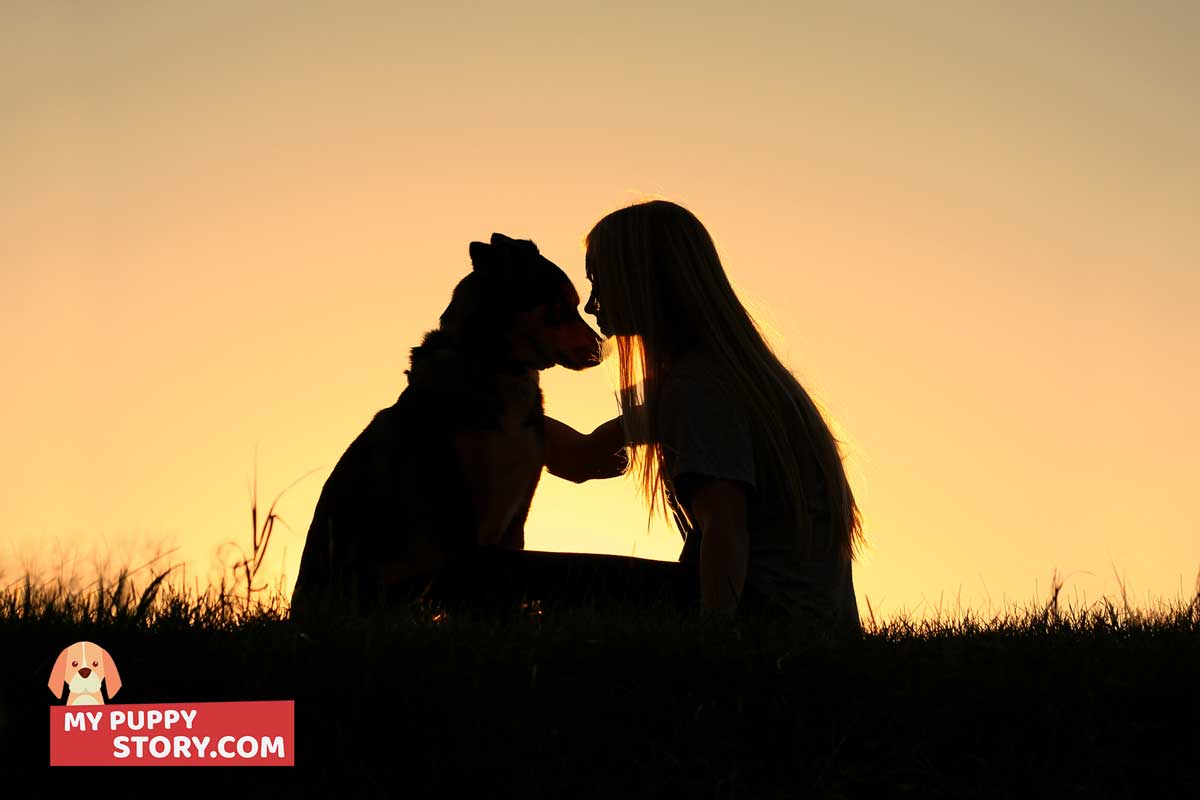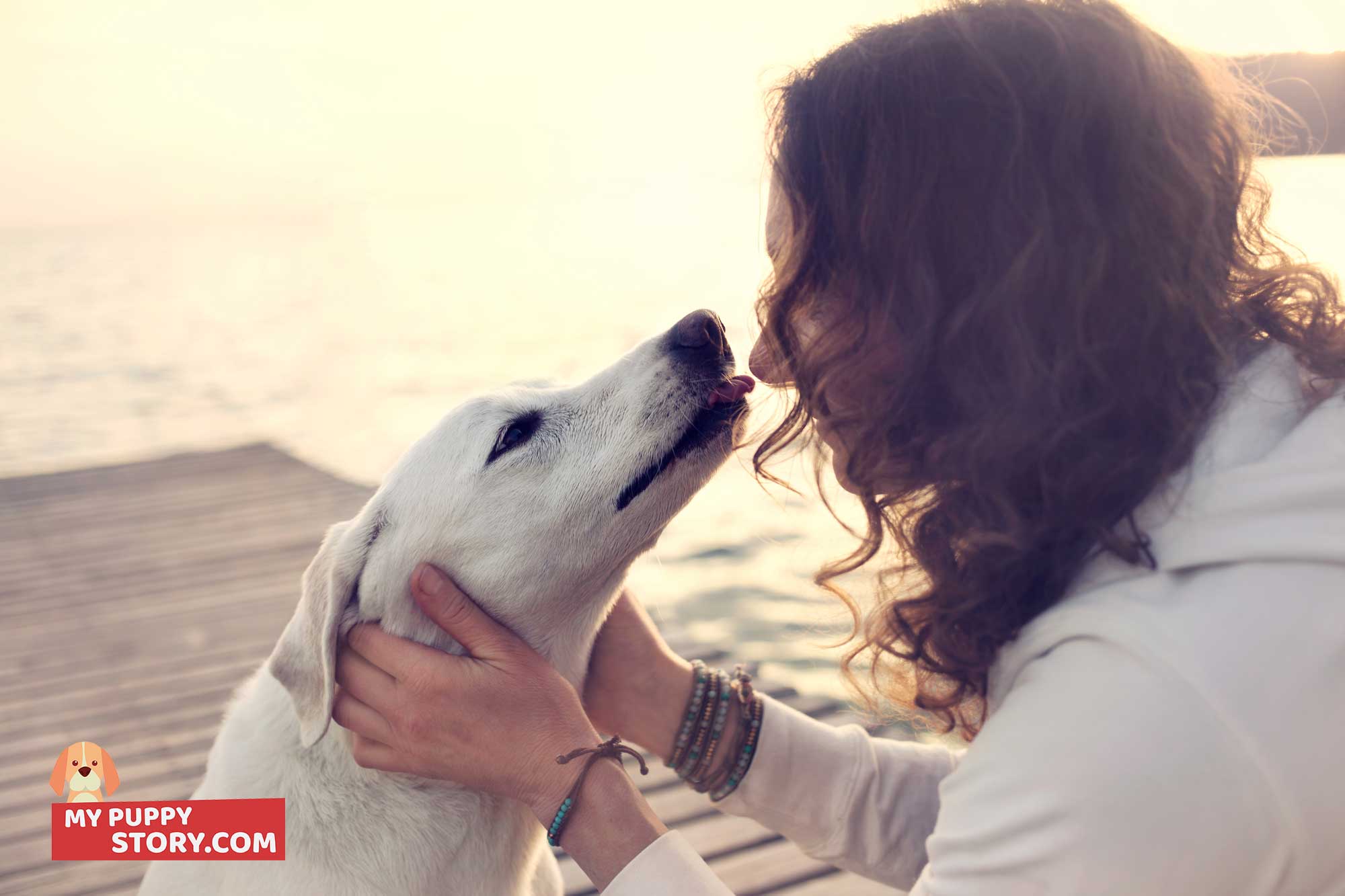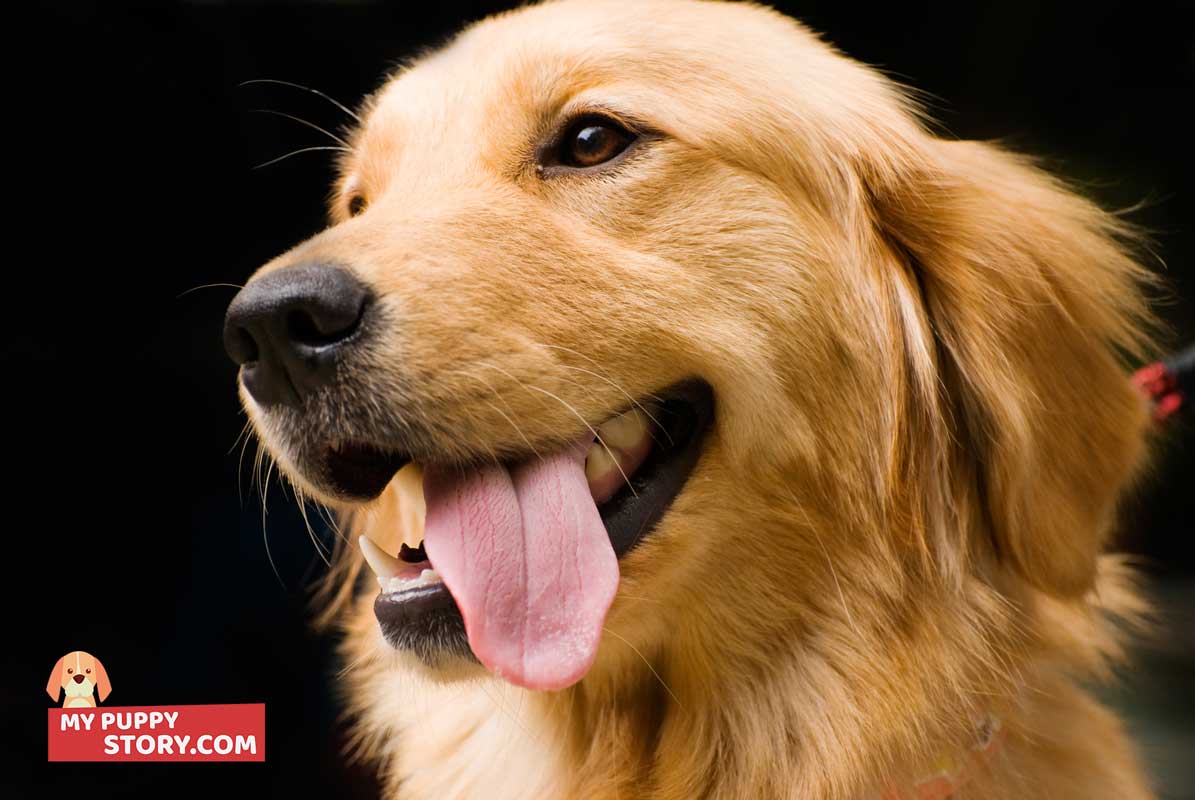Dog Body Language 101: The Ultimate Guide to Interpreting Non-Verbal Canine Language
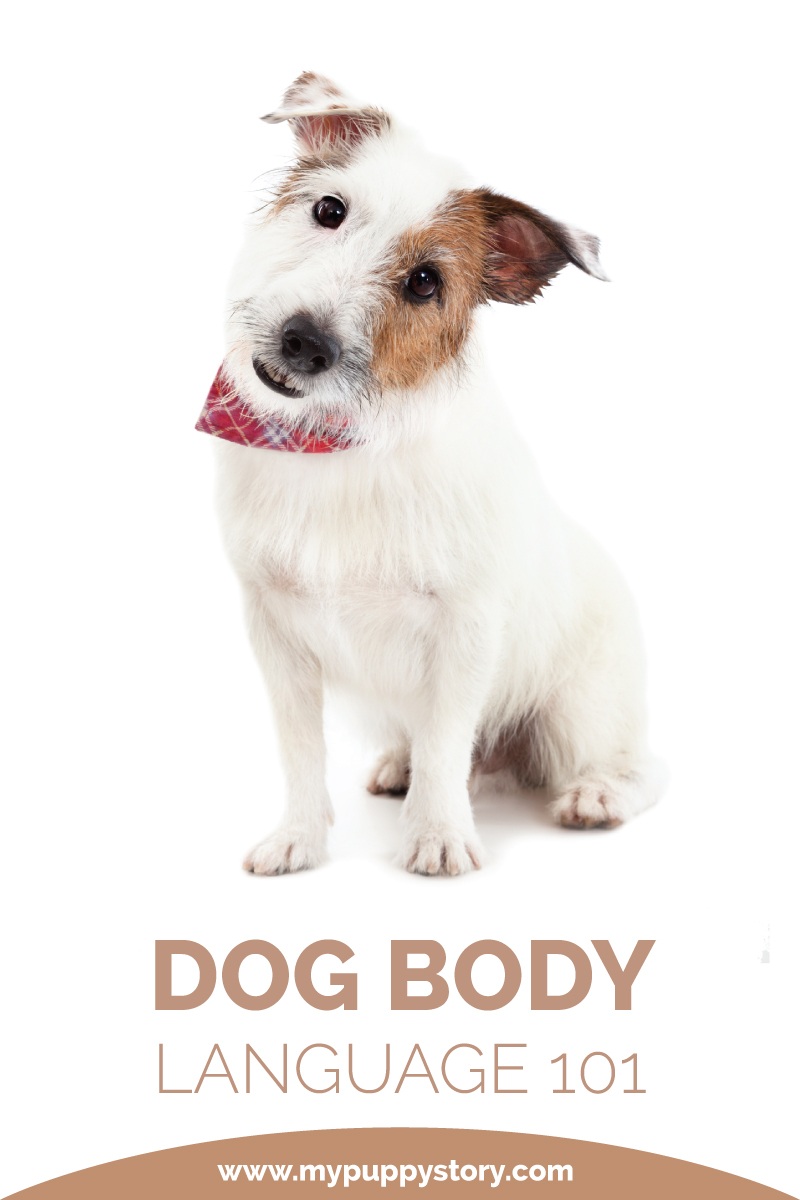
Ok, really…
Wouldn’t it be great if dogs talked, like converse in human languages?
It’d take out a truckload of the guesswork and uncertainty associated with consistently trying to read your dog’s feelings, actions, and what not.
But:
Even if that were possible in an alternate universe, verbal communication is but one form of communication. Non-verbal communication is just as important, if not more, even between humans.
In fact, according to human behavior experts, over 80% (that’s huge) of human communication is understood by interpreting non-verbal behaviors and cues.
I wouldn’t attempt to extrapolate that stat for human-canine communication, but the undeniable fact is that dogs are just as likely to express their emotional state, motivations, and intentions through non-verbal signals.
And it is a no-brainer why it is important to have the ability to understand these signals and vibes, holistically referred to as dog body language. Your ability to maintain top-level communication confidently and safely with your dog (part of which is the ability to read your dog’s vocal and non-vocal signals) is the very foundation of your owner-canine relationship.
Thankfully, reading a dog’s body language is not an impossible prospect.
Primary modes of sending non-verbal signals
It starts with identifying how a dog primarily sends non-verbal signals.
To draw an analogy, humans send non-verbal signals using different parts of the body, such as:
- A nod of the head,
- A wink of the eyes,
- Reddening of the cheeks,
- Gesticulating with hands,
- Overall body posture, stance, and/or gait
Like human body language, canines use specific body parts for primary non-vocal communication. These parts include:
- Head; primarily the eyes, mouth, and ears
- Tail
- Hair
- Using the entire body to make a reflective posture
Eyes
The three factors to note when observing your dog’s eyes are:
- Size of his eyes,
- Direction of his gaze, and
- Intensity of his gaze
Size
Dogs have different eye shapes—round, almond, oval, triangular; dimensions; coloration; and retinal configurations. However, the more important attribute to watch out for is the relative size of a dog’s eyes—the relative size can tell a lot about his mood and emotional state.
A relaxed, happy dog has no reason to alter the normal shape of his eyes, and wouldn’t. Things change however, when there is a stimulus.
- If the dog perceives this stimulus to be a threat, he’d typically respond by making his eyes appear larger
- If the stimulus is fright, stress, pain, or illness, then the eyes would seem smaller than usual and may even appear as a squint
- Sometimes, there needn’t be a stimulus for a dog to squint his eyes. Dogs usually squint when making a submissive grin, which is an appeasement gesture.
Direction and intensity of gaze
Between dogs, eye-to-eye contact isn’t a regular feature. It’s typically reserved for confrontations and prelude to rumbles. However, dogs learn it is ok to look directly at people.
- And typically one of the fondest memories you’d have of your dog is him looking at you with cute puppy eyes and a relaxed facial expression. He does this when he is being friendly and wants you to notice him.
- You’d be damned however if you came across a dog that gave you same direct gaze but with a tense stare. This is most likely a threat and you want to look away slowly.
- A dog does not always give a direct stare with tense facial expression to indicate readiness to become aggressive. He may give a “whale eye,” which involves him looking out of his eyes’ corners and you see much of his eyes’ whites.
You are most likely to get a whale eye when the dog is guarding a resource—toy, chew bone, or favorite spot.
- You should note that a whale eye is different from a sideway glance. A dog giving a sideway glance would not appear tense or rigid, and you wouldn’t see as much of his eyes’ whites.
- In some other scenarios, a dog would avert his gaze when you look at him. This may be a signal that he is being submissive. It may also be a signal that he is concerned about interacting with you (this may be as a result of him not having confidence to deal with people, due to an unpleasant history with people).
Mouth
As regards reading the non-vocal language of a dog’s mouth, you want to pay attention to the positioning of his lips, jaws, and teeth in tandem.
- A relaxed, happy dog would typically shut his mouth or open it slightly. If he keeps his mouth open, it is likely that he is panting (how dogs regulate their temperature), and you’d prolly see his teeth.
- A fearful dog may horizontally draw his lips back in a way that make his lips tight at the corners of the mouth. Possible display of his front (canines and incisors) and back teeth (premolars and molars) accompany this lip positioning.
- Dogs might yawn in an exaggerated fashion if they’re feeling uptight.
- A dog would also typically shut his mouth when he feels frightened or submissive. Furthermore, you’d prolly notice one or more of the following: lips slightly pulled back at the corners, in and out flicking of his tongue, or licking when interacting with another animal or a person.
- If the feeling of submissiveness is excessive, some dogs would make a ‘submissive grin.’ It involves lifting the lips up vertically and displaying the front teeth. Some people would mistake this grin as an aggressive gesture, when it is the exact opposite.
- You’re less likely to mistake a dog’s mouth positioning when he is aggressive. He’d typically retract his lips and prominently show his teeth. When he’s giving a warning not to intrude, he’d likely lift up his lips vertically, which will put his front teeth on display, and at the same time wrinkle the top of his muzzle.
- A dog that is ready to bite would usually push his lips up and back to open his mouth and expose his teeth.
- Another aggressive mouth positioning is an ‘aggressive pucker.’ This involves pushing the lips forward over the teeth, then exhaling air to make the lips appear large and puffy. Sometimes, you’d notice the dog breathing heavily and he may have a wrinkled forehead. A dog would typically give this signal when he doesn’t want you to get closer.
Ears
Some of us have the exciting ability to wiggle their ears. For dogs though, it is more of a standard trait. And you can use the ear positioning of your dog to ascertain his underlying emotional state.
- A relaxed, comfortable dog will hold his ears in its natural position.
- Should he be alert or curious, you’d notice him raise his ears higher and position them in the direction of whatever is piquing his interest.
- A dog feeling aggressive would raise his ears up and forward.
- When he wants to be friendly, he would pull his ears back slightly.
- A dog feeling frightened or submissive would usually stick out his ears to the sides of his head or keep his ears completely flattened.
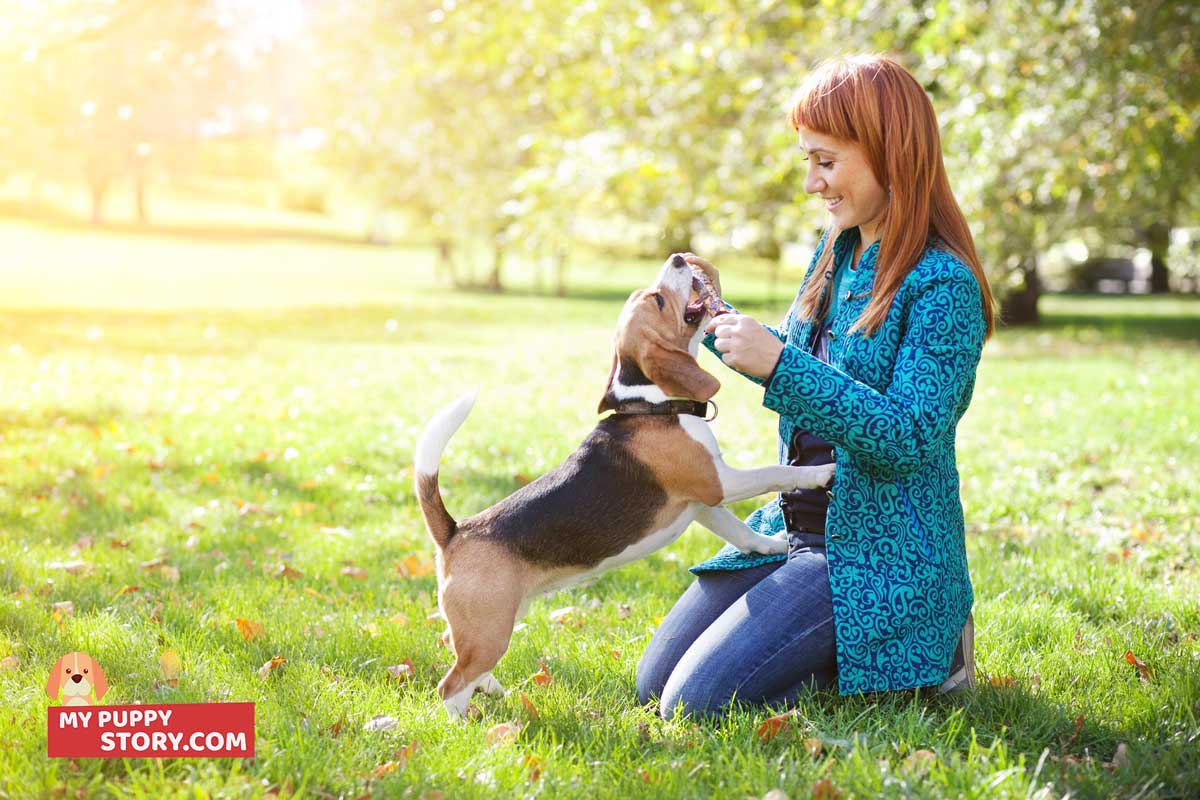
Tail
For most people, the default interpretation of a wagging tail is happiness and friendliness. Sure, this is often true, but not always. A dog uses its tail to give off a range of signals, some of which are easy to miss.
Dog breeds have different tail lengths, forms, and sizes. Ultimately, the type of tail a dog has influences his ability to express himself using his tail. This is particularly important to note since some breeders and owners perform tail docking on their dogs. It is not only often painful; it also impedes the ability of a dog to communicate properly with his tail.
- A relaxed dog will hold his tail in its natural position.
- And when he is happy, you’ll notice the familiar side-to-side gentle wagging. The wagging will be more forceful and may even be in a circular pattern if he is very happy, which often happens when you and your dog reconnect after being apart for a long time.
- A dog would also wag his tail from side to side if he is submissive or nervous. Alternatively, he might hold his tail lower or even tuck his tail between his rear legs. If he is being extremely submissive or scared, you’d notice him hold his tail against his belly.
- You may also observe tail movement when a dog is threatening another animal or a person, or he is standing his ground. Called a ‘flag,’ this tail movement involves holding his tail high and stiff, and moving it back and forth rigidly.
Although, it may appear like he is waggling his tail, the signals he’d give with other body parts would be anything but friendly.
- An alert or aroused dog wouldn’t move his tail. Rather, he’d usually hold it higher than normal, stiff, and without any movement.
Hair
A dog using his hair to give a signal would do either of two things:
- Shed, or
- Raise his hair
Dogs shed hair in copious amount when they are fearful or stressed. A typical instance where you’d notice this is during a visit to your vet. If your dog is nervous during one of these visits, you’d find that your dog’s hair would be all over the vet and the table.
Another way dogs respond when they are scared or nervous is to raise their hackles. The scientific term is piloerection. Both are fancy ways to refer to a dog raising his hair when he is aroused about something. You could compare it to a person having goose bumps.
Typically, the dog would raise the hair over the ridge where the shoulder blades meet (withers). But many dogs are capable of raising the hair all along their spine. Dogs raise their hackles to appear larger and would typically also release odor from glands in the hair follicles.
Piloerection could be an indication of a variety of emotional states—anger, uncertainty, excitement, fear, or insecurity about something.

Whole Body Posture
Dogs use their body to communicate intentions by either appearing:
- Normal,
- Smaller, or
- Larger
Normal
You’d expect a relaxed, contented, and happy dog to maintain their normal body size. He would relax his muscles in a normal fashion and balance his weight evenly on all four feet.
Even if he is in a good mood with quite a bit of bouncing or running with exaggerated movements, the relaxation of his muscles and facial expression will look natural.
Smaller
- A fearful or frightened dog would adjust his overall appearance to look small. This might involve him lowering his body, cowering on the ground, and/or holding his head low.
He’ll also attempt to avoid whatever is making him frightened. For example, if he is scared on an examination table, he will recoil away from the vet, preferring instead to lean into you.
- You’ll observe a submissive dog behave similarly to convey the message that he is not a threat. Like a fearful dog, he may lower his body or cower on the ground. However, he may raise his head if he is greeting another animal or a person.
- An uncertain but curious dog would take a slightly altered approach. He’ll adopt a stance you’ll consider careful—approaching tentatively to whatever he is curious about and centering his weight over his rear legs. This is so he can make a quick retreat/exit should there be the need to.
Larger
- An aroused, alert, or assertive dog would adjust his appearance to look large. You would observe his muscle become tense, he’d stand erect and may even be on his tiptoes, and he’d raise his head and neck above his shoulders.
Furthermore, he’d center his weight over his four feet or he’d leaning slightly forward on his front legs.
- An aggressive, angry dog would also appear large. This is because he wants to appear as intimidating as possible. And he’d give off other aggressive threats in addition to adopting a posture that an aroused, alert, or assertive dog would make.
However, he’d typically center his weight over his front legs (unlike a curious dog that is careful). This is so he can make a quick dash or charge forward rapidly.
An holistic, peculiar approach to reading your dog’s body language
When a dog communicates with his body, he’d usually use more than one body part to send signals. This isn’t necessarily complicating the message, but expressing it better.
For example, a dog making a ‘submissive grin’ would lift up his lips vertically and display his front teeth. Solely considering this, it is possible to misinterpret the mouth positioning as a sign of aggressiveness. But, you’d better understand the signal of submissiveness when you observe other body parts—lowering of his head, squinting of his eyes, and yelping or whining.
This instance underscores why reading a dog’s body language should be done holistically. Even if the message is subtle, with careful attention to the primary parts used for non-verbal communication (and sometimes vocal forms of communication—barking, whining, et cetera) you can recognize and interpret the message.
The different common canine non-verbal vibes
1. Happy, Playful
Relaxed, Contented, Happy, Playful
It is fun to be around a happy dog. There is no tension, his body is relaxed and fluid, nothing is unusual about his mouth or body posture, and the vibe you get is confidence, joy, and readiness for play and attention.
Observations
- Eyes are natural, blinking, or squinty
- Mouth is closed or opened slightly, tongue is relaxed and may be drooping to one side, and he may be pant with a regular tempo. Mouth corners (commissure) may be slightly raised like a makeshift smile.
When playful, he might growl or make high-pitched barks.
- Ears are natural
- Entire facial expression is neutral as his facial muscles are relaxed.
When he is playful, you might notice a “play face.” This involves him opening the mouth partially to appear as though he is smiling.
- Tail may be held in natural position or wagged from side to side or in a circular motion
- He may wiggle his back side
- Overall physique is natural and he might turn over to invite a belly rub
He may also invite play or at least give indication that he is in a playful mood (and as such following actions shouldn’t be taken seriously) by making a “play bow.” This involves him bouncing with his forelegs on the ground and hind legs extended to make his rear stick up.
Body movements would be bouncy or jerky. He may also bounce in exaggerate twists, leaps, and turns. Jumping on you and mouthing aren’t ruled out. During play, he may have small body freezes.
Excited
This vibe is intense and similar to what you’d get off him when he is alert or playful. You’d notice that he is prepped for action.
Observations
- Eyes are natural and he is transfixed on the source of his excitement, mouth is often open and he may bark, ears are up
- Tail is held high, and wagging may or may not occur
- Size is natural and he may center his weight over his rear legs in preparation to move
2. Fearful, Nervous, Stressed
Discomfort, fearful, nervous, stressed
A nervous, fearful, or stressed dog would give off signals that serve either of two purposes:
- relieve the stress, or
- appease the perceived threat
Observations
- Eyes are transfixed on the threat or the dog might turn his head away as an appeasement gesture
- He might yawn in an exaggerated way; flick his tongue; lick his lips; engage in raspy, dry-sounding pant; or drool
- Ears are flattened back on his skull
- Facial muscles are rigid and tense—curved eyebrows, furrowed brow, tense jaw with mouth closed, twitching whiskers
- Tail is held low or tucked between the rear legs
- Piloerection may occur
- Overall body size is smaller as he keeps his body hunched. Additionally, he may cower close to the ground, center his weight over his rear legs while leaning should he have to make a hasty retreat, or lean to the side in anticipation of having to recoil.
His body may freeze briefly, or until the threat goes away or he decides to engage in fight or flight. You may also notice him shaking and he may have sweaty paws.
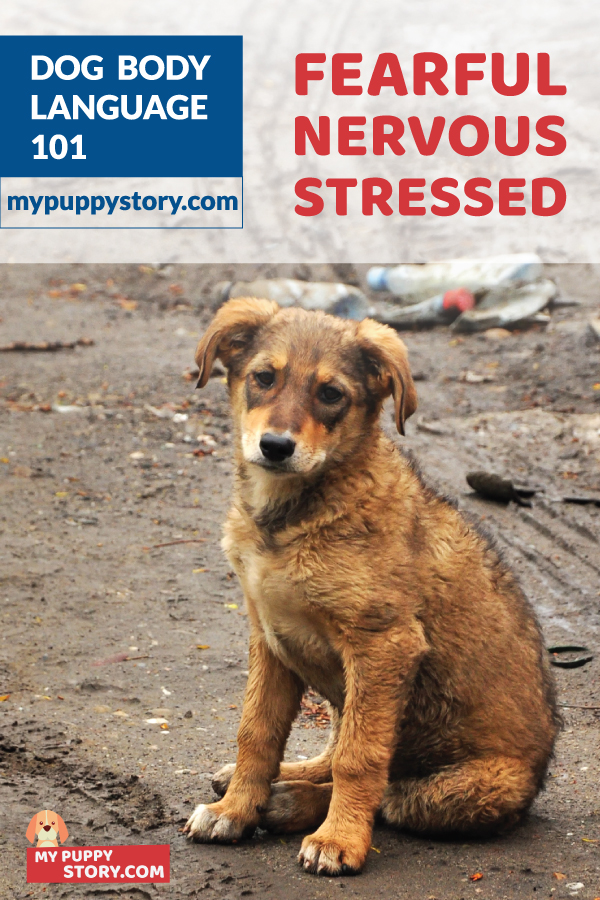 Fearful Aggressiveness
Fearful Aggressiveness
A fearfully aggressive dog has about the same appearance as a fearful dog. The fearfully aggressive stance is an escalation from just being fearful or an alternative response to appeasement.
Not all dogs will resort to aggression when they are fearful, but some will see that as the only available choice if he feels trapped with no obvious avenues for escape.
Body size will still be smaller and he’d continue to cower. However, he’d begin to show his teeth and might snarl or growl. Any bite or snap from him will be lightening quick, followed by an equally quick retreat as far away from the threat as he can get.
Some dogs would not bite until they notice the threat retreating, and then they’ll go at the threat in an attempt to nip from behind.
Displacement
In the face of a perceived threat, dogs may also engage in behavior that’d provide self-calm and/or divert attention to something else other than them. For instance, a dog sniffing the ground would get the threat to focus on the act of sniffing rather than the dog himself or any negative intention.
A dog may also engage in these behaviors when he desires an outlet to eschew pent up frustration or energy. Sometimes, displacement actions can be the underlying reason for exhibiting compulsive behaviors, such as excessive licking or spinning.
Observations
- sniffing or sneezing,
- yawning, licking the nose, or chattering the teeth
- pacing, spinning, or shaking the body in a way that mimics getting water off their back
3. Aggressive
Dominance
A dog exhibiting dominant behavior wouldn’t appear assertive but not overly aggressive, although it can be a precursor to aggressiveness.
Observations
- Eyes are locked on the subject of his attention
- Mouth is typically closed, although he may growl
- Ears are raised and have a forward orientation
- Tail is rigid and high. He may flag or quiver the tail at its end.
- Piloerection may or may not occur
- Overall body posture is adjusted in a way to appear larger, including standing tall and sometimes on tiptoes, distributing his weight squarely on all four feet or he may slightly lean forward, arching his neck, and appearing tense
Dog Fears And Phobia And How To Overcome Them
Defensively Aggressive
A dog that encounters a perceived or actual threat would be either submissive or aggressive. Both are natural responses to ensure individual safety.
An aggressive dog typically gives off the “back off and let me be” vibe, and would often give lots of warning in a defensive posture to prevent physical altercation. You’d notice a mix of fearful and aggressive postures when a dog is defensively aggressive.
In general, this posture is sometimes a bluff, as the dog may opt to retreat if things escalate. However, for some dogs, the next course of action following this posture depends on the prevailing level of confidence and fear they feel.
Observations
- Lips are drawn back, teeth are visible, and you may or may not notice wrinkling of the muzzle. Furthermore, he’d usually bark (often high-pitched), snarl, or growl.
- Ears are up and oriented forward
- Tail is rigid and held high
- You may notice piloerection
- Overall body figure would appear larger, and he may center his weight variedly depending on the situation—it may be squarely on all four legs, just the forelegs, or only the rear legs.
How he centers his weight would depend on proximity to the threat and intention—to retreat, charge forward, or stand his ground.
Offensively Aggressive
The feeling of anger and confidence is often a potent cocktail to spark offensively aggressive body language.
The intention is clear; he is to give all he’s got in an all-out attack. After he lashes out, whether he continues or stops has little to do with the reaction of the focus (animal or person) of his attack.
Observations
- Eyes are transfixed at the focus of his attack
- Lips are retracted vertically and muzzle is wrinkled to show his teeth. He’d also bark (in a tone that is low but threatening), snarl, or growl.
- Ears are up and have a forward orientation
- Tail is raised high, rigid, and may be flagged
- He may raise his hackles
- Body posture that appears larger with head held high and weight centered over the forelegs in readiness to charge or lunge forward.
4. Curious, Aroused
Curious, anticipatory
The natural response for a dog to any situation is to size it up to ensure safety. Curious body language oozes caution. And the degree to which a dog is curious depends on his confidence level.
You’d typically notice the dog keeping his mouth closed and he may cock his head to one side. Furthermore, he may lift his front paw in anticipation of what would happen next.
Alert
An alert dog isn’t necessary curious, at least not immediately. A dog is curious when he musters the confidence to explore the subject of his curiosity, after a brief moment of being at alert.
Understandably, the demeanor of an alert dog is to be focused and intense.
Observations
- Eyes stare at the reason why he is alert
- Closed mouth, although he may bark or growl
- Raised ears pointing forward
- Erect head and neck
- Rigid, immobile tail may stay in the natural position, raised vertically, or raised over the back
- Piloerection may or may not occur
- Maintains an upright stance and weight is centered on all four legs
Aroused
When a dog gives off an aroused vibe, it is quite easy to confuse it as being alert or excited. For the most part, it isn’t an important distinction to make.
However, one instance where making the distinction is crucial is when the source of the arousal pushes a dog closer to feeling aggressive or frightened. In which case, his body language varies depending on how he feels—fearful, angry, or uncertain.
The reason why a dog is aroused may or may not be noticeable to you. For example, it could be an odor or sound that you can’t sense.
Observations
- Eyes may or may not be transfixed at the reason for his arousal
- Ears may be positioned forward or flattened to the side
- Tail may be held high, in the normal position, or low, depending on prevailing emotional state
- Piloerection is typically a given
- Body posture may be normal or adjusted to appear larger
5. Appeasement, Submissive
Dogs would not always be happy, confident, defensive, or aggressive. Sometimes, they recognize their limitations and know their best option is to stand down and let the other party have his way.
A dog willing to make this concession would display appeasement, deference, displacement, or submissive behavior. In general, while a socially experienced dog and human receiving the signals would tolerate and reciprocate with appropriate signals, a less experienced dog would interpret the signals wrongly and instead reciprocate with inappropriate signals, such as dominant or aggressive behavior.
A dog may either engage in:
- active, or
- passive submission
Active submission observations
- Avert eye gaze away from the other party
- Licking, flicking, or nuzzles of the tongue
- Ears are flattened and held by the sides of the head
- Tail is low or tucked and may be waggling in back and forth motion
- Body posture is adjusted to appear smaller as he hunches over and gets close to the ground
- Some dogs, usually puppies, would also urinate
Passive submission observations
- Avert eye gaze as well
- Might engage in whining
- May lie still or roll over on his back to display his genitalia
- He may also paw at the other party or urinate (usually puppies)

